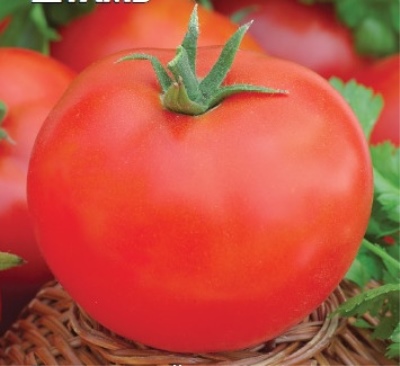
- Authors: Lukyanenko A.N., Dubinin S.V., Dubinina I.N.
- Year of approval: 2010
- Category: grade
- Growth type: determinant
- Appointment: fresh consumption, for whole fruit preservation
- Ripening period: early
- Ripening time, days: 85-95
- Growing conditions: for open ground, for film greenhouses
- Bush size: undersized
- Bush height, cm: 45-50
If you want to grow a tomato in a region characterized by harsh climatic and dramatically changing weather conditions, you will need to choose a variety that would have not only impressive resistance to all external factors, but also a good harvest of fruits. A variety suitable for cultivation in difficult weather conditions will be the Amur bole, which is distinguished by its unpretentiousness, cold resistance and excellent yield.
Breeding history
The Amur stem, which is determinant, was bred in Russia. The authors of the culture are considered to be breeders Lukyanenko A.N., Dubinin S.V., Dubinina I.N. It was added to the state register not so long ago - in 2010.
Description of the variety
Like all standard crops, the Amur stem is considered undersized and compact, growing only up to 45-50 centimeters. The foliage is large, dark green in color. The Amur bole is recommended for open field cultivation. At the same time, many of them are successfully planted on balconies, loggias, as well as in greenhouses.
The variety is undemanding to care, has a good growth rate. Each bush will have 25-35 berries. The Amur bole is distinguished by the fact that tomatoes ripen together in good weather and when it rains. Due to the fact that the bushes are not tall, they do not need to be tied up. Stepsons are formed rather moderately. The roots of the culture are superficial, and the stems are distinguished by their strength.
The main qualities of the fruit
The tomato variety Amurskiy bole has medium-sized fruits, while one vegetable can reach a weight of 100-120 grams. A ripe vegetable is red, while an unripe vegetable is light green in color. The shape of the tomatoes is flat-round, and the flesh of the berries is dense.
Taste characteristics
The vegetables of the variety in question are quite pleasant to the taste, they are recommended to be consumed fresh from the garden. However, due to its excellent taste characteristics, the scope of application is not limited to the use of fresh fruits. From them you can make many different blanks for the winter.
Ripening and fruiting
The culture has a difference in terms of ripening. They are early, since the first tomatoes ripen already 85-95 days after planting the seed. Fruit picking takes place in July.
Yield
The bushes of the Amursky bole tomato variety are not high, the crop yield indicators are very good. So, from a square meter of such miniature plants, up to 4.8 kg of ripe delicious tomatoes can be removed.
The timing of planting seedlings and planting in the ground
Given the early maturity of the tomato culture, the Amur bole can be grown outdoors using the so-called non-seedling method. True, this method should not be used in areas with harsh climatic conditions. Here you still have to grow seedlings first, only then you can harvest tomatoes on time. The seeds are planted in March or April, and after 50-55 days they are transferred to the ground.

Growing tomato seedlings is an extremely important process, because it largely depends on whether the gardener will be able to harvest at all. All aspects must be taken into account, from seedbed preparation to planting in the ground.
Landing scheme
If you listen to the recommendations of the originators of this variety, then on 1 square meter it is worth planting up to 5-6 plants.

Growing and care
After the soil warms up, make a bed, and arrange arcs along it. Grass is spread on the bottom, then humus mixed with ash. The disembarkation is done in a checkerboard pattern. Then the seeds are covered with 15 cm of soil, spilled with a solution of potassium permanganate, which should be warm, and covered with a jar. Stretch the film along the arcs, sprinkle it with earth for stability.
The film is opened when the seeds sprout. From the grown bushes, no more than 2 shoots are left. Standard varieties do not need to dive, the roots will develop better. Thus, seedless cultivation differs in that:
- leaving takes less time;
- tomatoes will have time to ripen before the cold weather;
- foliage and stems will not be affected by late blight.




A plant needs different micronutrients at each stage of growth. All fertilizers can be divided into two groups: mineral and organic. Folk remedies are often used: iodine, yeast, bird droppings, eggshells.
It is important to observe the rate and period of feeding. This also applies to folk remedies and organic fertilizers.



























































































